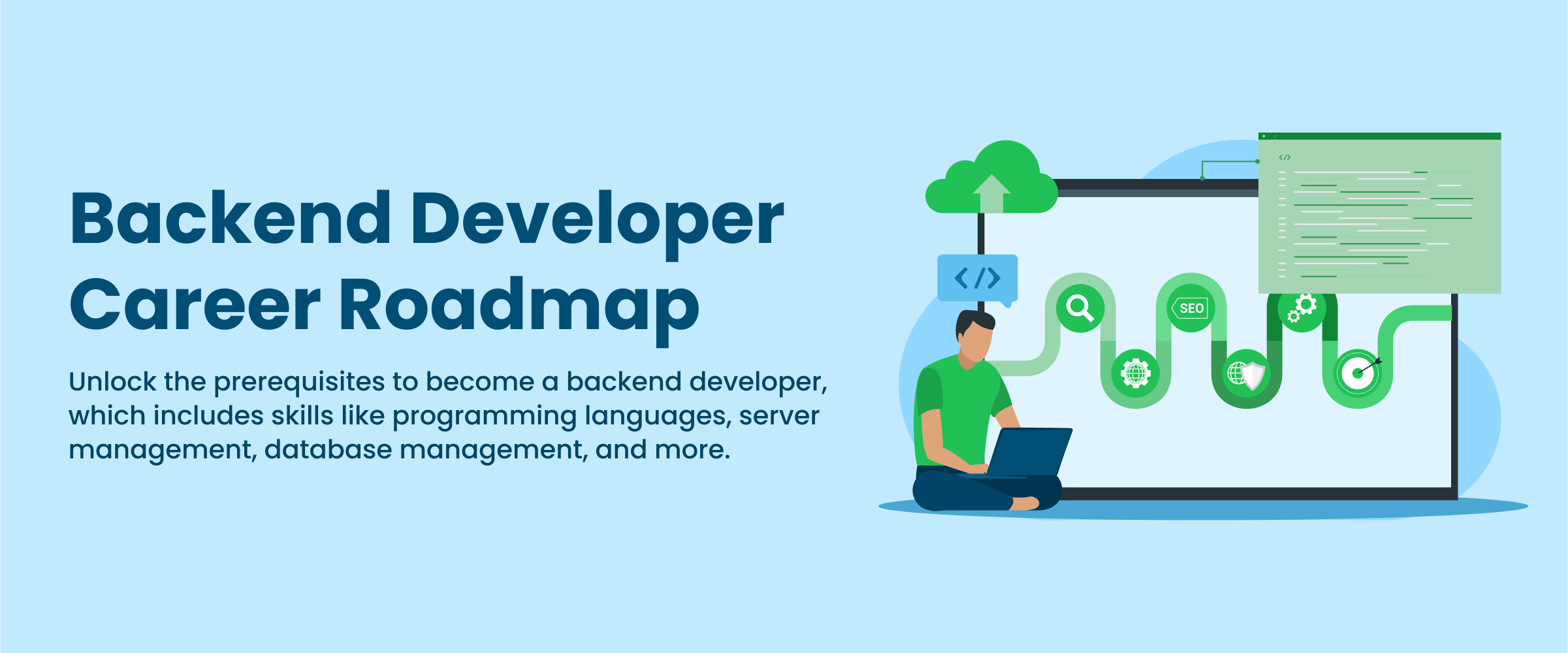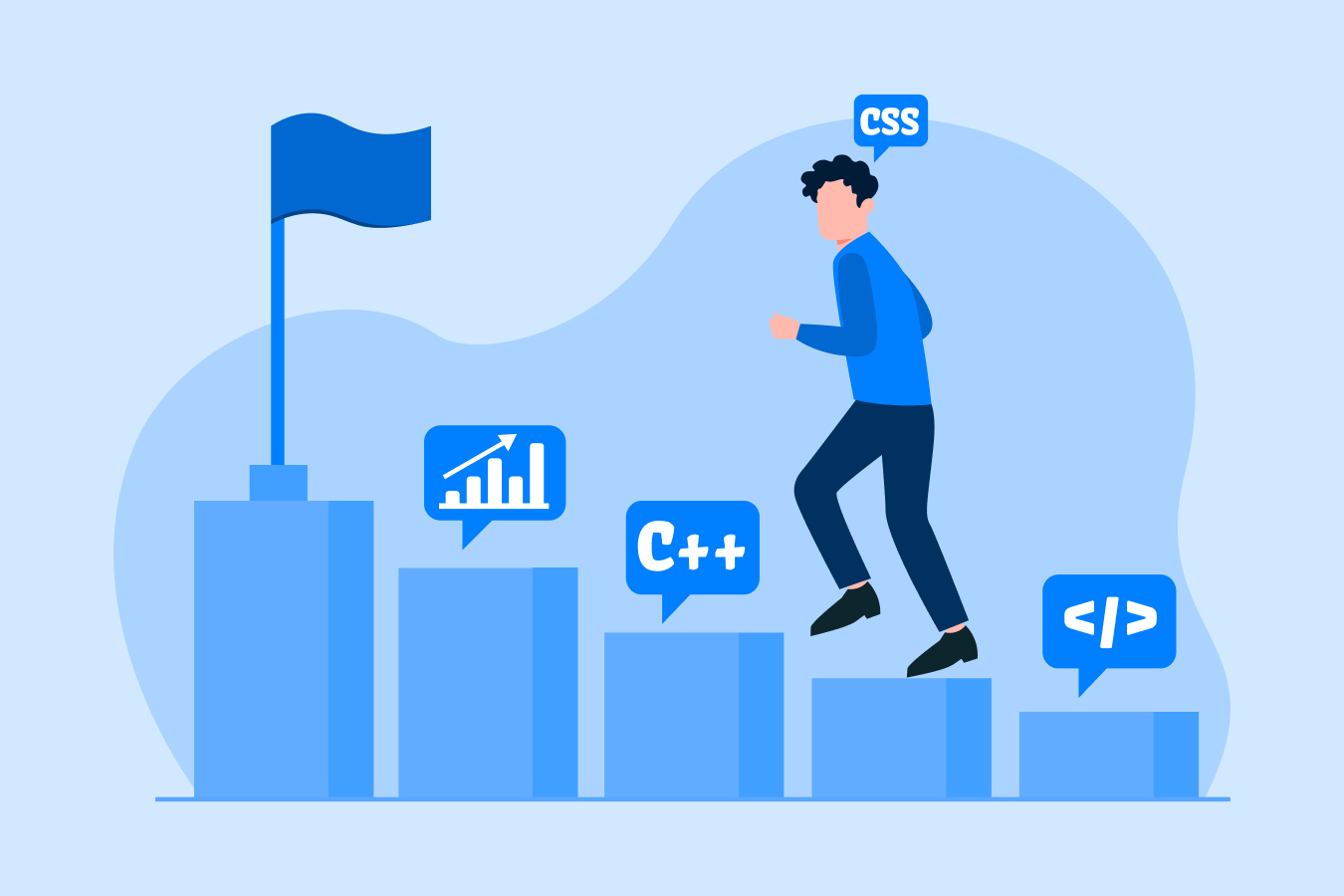Backend Developer Career Roadmap: The 2024 Guide
Backend development stands as a pivotal pillar supporting the functionalities of countless applications and services. Behind the scenes, backend developers play a crucial role in crafting the logic and infrastructure that power the digital world. For aspiring backend developers and seasoned professionals alike, having a clear backend roadmap can be instrumental in navigating this dynamic field effectively. In this guide, we will delve into the intricacies of the backend developer roadmap, outlining the essential steps, skills, and resources necessary for success.
Who is a Backend Developer?
A backend developer is a professional responsible for creating and maintaining the server side of web applications. They focus on the technical aspects of a website, such as databases, servers, and APIs. Here are some of the key duties they are responsible for.
- They develop and test the program logic to ensure that applications run smoothly.
- They also create and maintain databases and other server-side architecture.
- They write code to implement the user interface.
- They also ensure that the application is secure and performs optimally.
Roadmap to Become a Backend Developer: The 4 Key Steps
A step-by-step roadmap for back-end developers is provided below to understand how to pursue this career path.
Step 1: Pursue an Appropriate Degree
If you want to pursue a career in backend development, it is ideal to obtain a relevant degree. A degree program will provide fundamental knowledge in various areas crucial for backend development, including programming languages, data structures, algorithms, database management, and software development methodologies.
To lay the foundation for a career in backend development, you can consider studying the following degree:
- Bachelor’s or Master’s degree in Computer Science, Software Engineering, Information Technology, or a related field.
- Professional training certification, like a full stack development course with a placement, gives you essential knowledge of backend development and offers a guaranteed job or internship opportunity.
Step 2: Acquire the Right Skills and Knowledge
Becoming a proficient backend developer requires acquiring the right skills and knowledge. With the right skills, developers can unlock new possibilities and expand their expertise. Here is the list of essential skills that you should master to become a backend developer:
- Programming Languages: Java, Python, and JavaScript are among the most popular languages in backend development. Begin by mastering one or more of these languages and understanding their syntax, data structures, and principles of object-oriented programming.
Tip: Learn programming languages with the help of short-term courses. To help you get started, here are some courses that you can consider pursuing:
- Database Management: Gain proficiency in database systems like SQL (Structured Query Language) and NoSQL databases like MongoDB. Learn how to design efficient database schemas, execute queries, and optimize database performance.
- Web Servers and APIs: Familiarize yourself with web servers like Apache and Nginx and RESTful and GraphQL APIs. Understand how to design and implement APIs for seamless interaction between frontend and backend systems.
- Version Control Systems: Proficiency in version control tools like Git is indispensable for collaborative development. Learn to manage code repositories, branch workflows, and merge changes effectively. Consider enrolling in a Git or GitHub course to learn how to use the tool.
- Security Principles: Acquire knowledge of web security fundamentals, including authentication, authorization, data encryption, and protection against common security threats like SQL injection and cross-site scripting (XSS).
Step 3: Gain Specialization in Advanced Topics
Once you have established a solid foundation, consider specializing in specific areas of backend development based on your interests and career goals. Some common specializations include:
- DevOps and Deployment: Learn about continuous integration/continuous deployment (CI/CD) pipelines, containerization with Docker, and orchestration tools like Kubernetes for efficient deployment and management of backend services.
- Big Data and Analytics: Dive into big data technologies such as Hadoop and Spark for processing and analyzing large datasets. Understand how backend systems can leverage big data tools to extract valuable insights and improve decision-making.
- Machine Learning Integration: Gain knowledge of machine learning frameworks like TensorFlow and sci-kit-learn and learn how to integrate machine learning models into backend applications for tasks such as predictive analytics and natural language processing.
- Serverless Computing: Explore serverless computing platforms like AWS Lambda and Google Cloud Functions.
Step 4: Build Your Portfolio
Create a portfolio of projects showcasing your backend development skills. Include a variety of web development projects demonstrating different aspects of backend development, such as database-driven web applications, RESTful APIs, or microservice architectures. Your portfolio will serve as a tangible demonstration of your abilities to potential employers.
Step 5: Gain Experience Through Internships or Entry-Level Jobs
Theoretical knowledge is important, but to become a proficient backend developer, gaining real-world experience is essential. One of the best ways to do so is by seeking internships or entry-level positions. Such positions offer you the chance to work on industry-relevant projects and apply the skills you have learned in college.
You can explore platforms like Internshala to find back-end development internships. The platform offers a user-friendly interface and allows you to filter employment opportunities based on your interests, skills, and preferred location.
What is the Salary of a Backend Developer?
The salary of a backend developer can vary depending on factors, such as experience, location, industry, company size, and skillset. Here is the salary range for back-end developers based on their experience:
| Experience Level | Salary Range |
| Entry-level | ₹5.6 LPA – ₹7.7 LPA |
| Intermediate-level | ₹9.7 LPA – ₹11.8 LPA |
| Senior-level | ₹15.9 LPA – ₹18 LPA |
Popular Backend Developer Roles
As the world becomes increasingly digital, the demand for effective and efficient technological solutions continues to rise. As a result, backend developer roles have had to evolve and diversify to meet the ever-changing needs of the tech landscape. If you are interested in pursuing a career in this exciting and ever-growing field, here are some of the most popular backend developer roles to consider.
- Java Developer: Java developers use Java to build scalable, secure, and platform-independent backend applications. Java developers are in high demand because of their ability to create robust backend systems that can handle large amounts of data and traffic.
- Full-Stack Developer: Full-stack developers are skilled in both front-end and back-end development. They can design and build user interfaces, server-side logic, and databases. Full-stack developers are becoming increasingly sought-after because of their well-rounded skills.
- DevOps Engineer: DevOps engineers bridge the gap between development and operations teams. They work to automate the process of building, testing, and deploying applications. This helps to ensure that new features can be released quickly and reliably.
- Software Engineer: Software engineers are involved in the entire software development lifecycle, from designing and coding applications to testing and deployment. Software engineers are in high demand because they can work on various projects, from web applications to mobile apps to desktop software.
- iOS Developer: iOS developers specialize in building applications for Apple’s iOS operating system, which is used on iPhones and iPads. iOS development involves creating the back-end functionality that powers iOS apps. iOS developers need to have a strong understanding of Apple’s development tools and frameworks to create efficient and user-friendly apps for iOS devices.
Conclusion
Embarking on a career as a backend developer is an exciting and rewarding journey filled with opportunities for growth and innovation. This blog outlines the backend developer roadmap. By following it, you can navigate the complexities of backend development and acquire the skills and knowledge needed to thrive in this dynamic field. Remember to stay curious, continuously learn, and adapt to emerging technologies.






